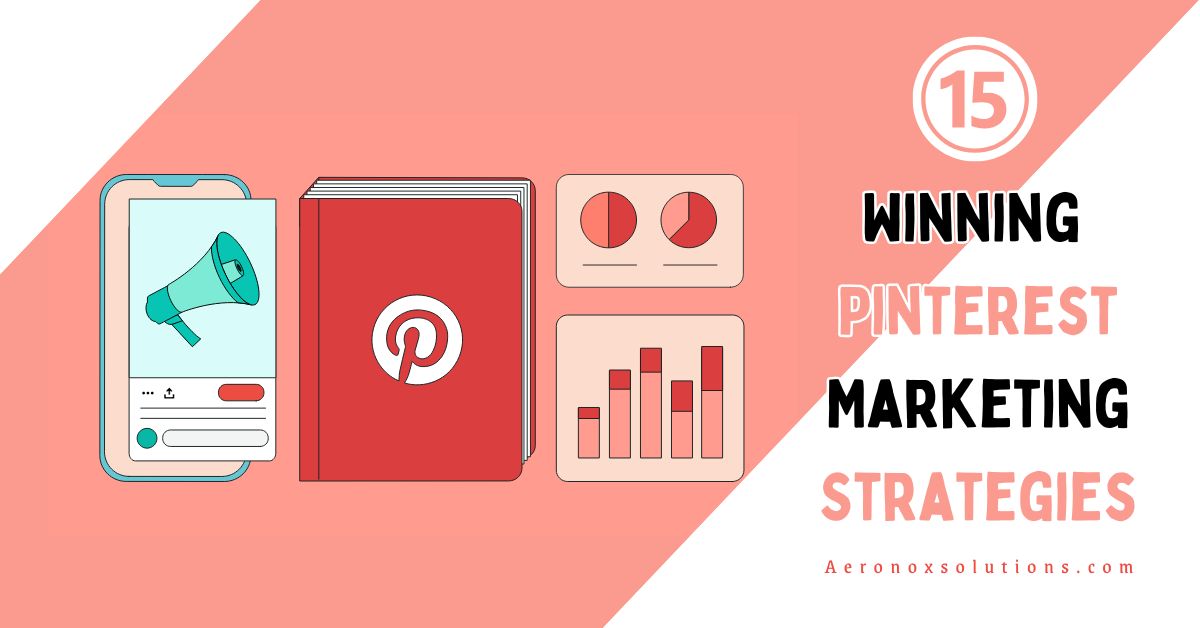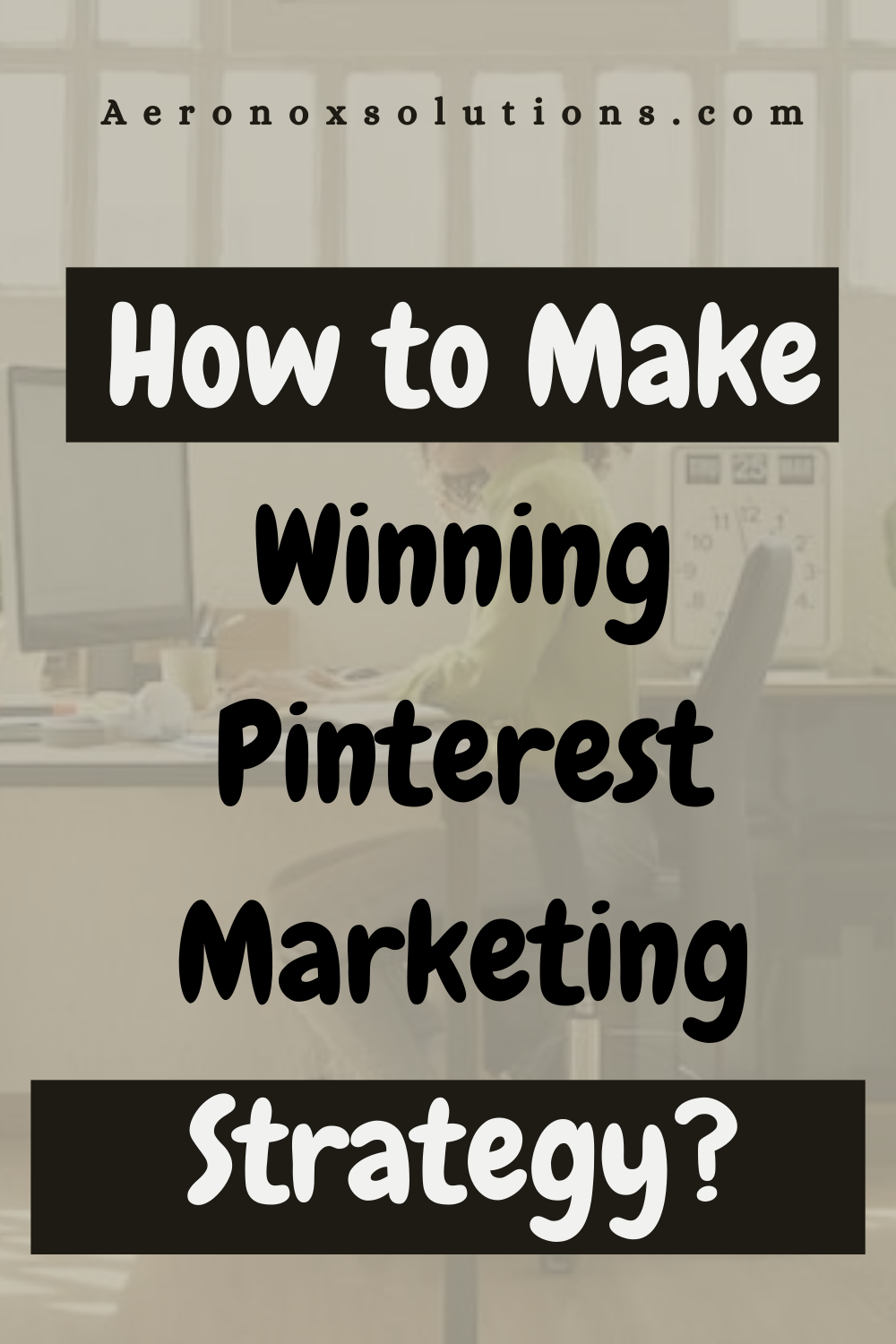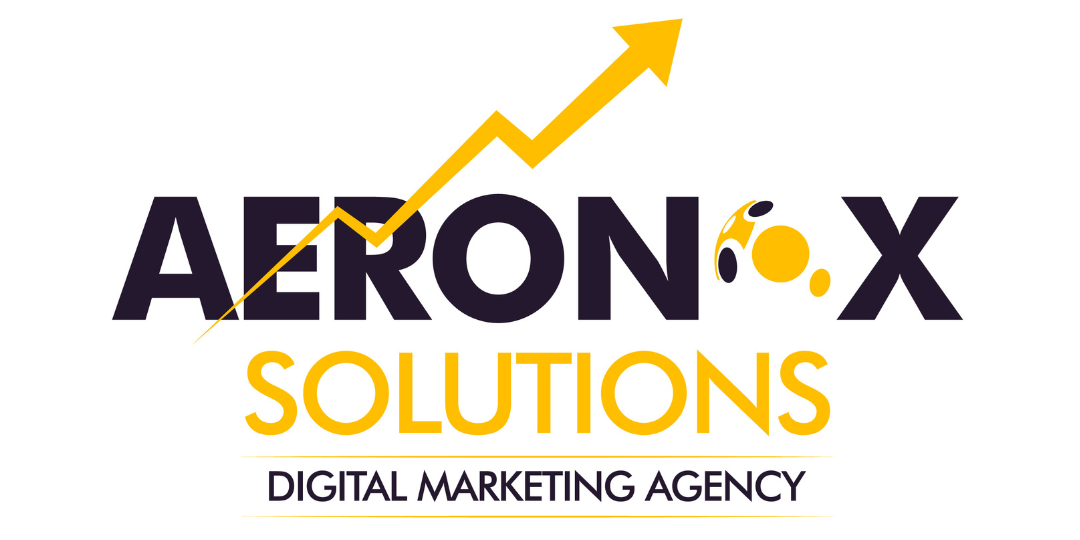
In the ever-evolving landscape of digital marketing, Pinterest isn’t just a social network, it’s a visual discovery engine and a shopping hub. With over 433 million users, it’s where inspiration meets intent. In fact, 83% of users have bought something based on Pinterest content, proving it drives real results. As we look ahead to 2025, the stakes are higher than ever. Pinterest’s growth, combined with its advanced tools and features, makes it a non-negotiable platform for brands aiming to stand out in a crowded digital space.
Winning Pinterest Marketing Strategies 2025

But here’s the catch: success on Pinterest isn’t just about being present, it’s about creating a strategy that resonates with a highly engaged, purchase-ready audience. From optimizing your profile to creating irresistible content, running targeted ads, and tracking performance, every detail matters.
If you’re a pro or new to Pinterest, this Pinterest Marketing Strategies guide is your roadmap to mastering the platform in 2025. Ready to get started? Let’s dive in.
1. Optimize Your Pinterest Profile
Your Pinterest profile is the first impression potential followers and customers will have of your brand. A well-optimized profile not only boosts your credibility but also increases discoverability and engagement. Here’s how to make sure your profile stands out:

Why Profile Optimization Matters
- Pinterest is a search engine: Over 97% of searches on Pinterest are unbranded, meaning users are looking for ideas, not specific brands. A well-optimized profile helps you appear in these searches.
- Higher engagement: Profiles with clear branding and keywords see up to 30% more engagement than those without.
- Drives traffic: Pinterest drives 4.3x more traffic per click than other social platforms, making it a powerful tool for lead generation.
Steps to Optimize Your Pinterest Profile
- Select a Strong Profile Picture
- Use a high-resolution image of your brand’s logo.
- Keyword-optimize the image by including your top keywords in the file name (e.g., “organic-skincare-logo.png”).
- Spell and Format Your Business Name Consistently
- Ensure your business name matches your other online profiles (e.g., Facebook, TikTok) for brand consistency.
- Craft a Compelling Bio with Relevant Keywords
- Include 2-3 primary keywords that describe your business (e.g., “Eco-friendly home decor” or “Organic skincare products”).
- Add a call-to-action (CTA) like “Shop now” or “Explore our collection” to drive traffic.
- Fill Out Your Profile Thoroughly
- Add links to your website and other social media profiles.
- Enable visibility to search engines in your Privacy Settings to increase discoverability.
- Conduct an Informal Competitive Audit
- Regularly check competitors’ profiles for inspiration.
- Analyze their bios, boards, and content strategies to identify gaps and opportunities for your own profile.
Switch to a Business Account
- A Pinterest Business Account gives you access to analytics, ads, and rich pins essential tools for marketing. Businesses that use Pinterest Ads see 2x higher return on ad spend (ROAS) compared to other platforms.
Enable Rich Pins
- Rich Pins provide extra details like product prices, availability, and descriptions directly on your pins.
- Brands using Rich Pins report a 40% higher engagement rate.
Organize Boards Strategically
- Create boards around your niche and use keyword-rich titles and descriptions (e.g., “Modern Kitchen Design Ideas” or “Summer Outfit Inspiration”).
- Boards with clear, descriptive titles receive 50% more saves than generic ones.
Add a Featured Section
- Highlight your best boards or pins at the top of your profile to showcase your most valuable content.
- Profiles with featured sections see a 20% increase in follower growth.
Pro Tip:
- Use Pinterest Analytics to monitor profile performance. Track metrics like impressions, clicks, and saves to refine your strategy. Businesses that regularly analyze their data see a 25% improvement in engagement over time.
By optimizing your Pinterest profile, you set the stage for a successful marketing strategy. It’s not just about looking good, it’s about making your brand discoverable, engaging, and ready to convert.
2. Research and Use Relevant Keywords
Pinterest isn’t just a visual platform it’s also a search engine. In fact, 97% of all searches on Pinterest are unbranded, meaning users are actively looking for ideas, inspiration, and solutions rather than specific brands. This makes keyword research a critical part of your Pinterest SEO.

Why Keywords Matter on Pinterest
- Pinterest users are planners: 85% of Pinners say they use the platform to plan for life moments, like weddings, home renovations, or holidays. They’re searching for specific ideas, making keywords essential for discoverability.
- High purchase intent: 83% of weekly Pinners have made a purchase based on content they saw on Pinterest. Using the right keywords ensures your content reaches users ready to buy.
- SEO-driven platform: Pinterest prioritizes content that aligns with user search intent, so optimizing your Pins and boards with keywords boosts visibility.
How to Find the Right Keywords
- Use Pinterest’s Search Bar: Start typing a topic related to your niche, and Pinterest will suggest popular keywords. For example, typing “fall fashion” might suggest “fall outfits 2025” or “affordable fall wardrobe.”
- Analyze Pinterest Trends: This free tool shows trending keywords and topics in your industry. For instance, searches for “sustainable home decor” grew by 40% in 2023, making it a valuable keyword for eco-friendly brands.
- Study Your Competitors: Look at the profiles of top competitors in your niche. What keywords are they using in their Pin descriptions, board titles, and bios?
- Use Keyword Tools: Tools like Tailwind or Keysearch can help identify high-volume, low-competition keywords specific to Pinterest.
Where to Use Keywords
- Pin Titles and Descriptions: Include primary and secondary keywords naturally. For example, a Pin titled “10 Minimalist Living Room Ideas” with a description like “Discover minimalist decor tips for small spaces” performs better.
- Board Titles and Descriptions: Create boards around keyword-rich topics like “Modern Kitchen Design Ideas” or “Affordable Workout Gear.”
- Profile Bio: Use keywords that describe your brand and niche. For example, “Handmade Jewelry for Women | Unique Gift Ideas.”
Pro Tip:
- Long-tail keywords (e.g., “Pinterest marketing tips for beginners”) are highly effective on Pinterest. They have less competition and align with specific user intent, increasing the chances of your Pins being discovered.
By incorporating keyword research into your Pinterest strategy, you can ensure your content reaches the right audience, drives traffic, and boosts conversions. In 2025, this approach will be more important than ever as competition on the platform grows.
3. Create Eye-Catching, High-Quality Pins
When it comes to Pinterest, visuals are everything. The platform is inherently visual, and users are drawn to Pins that are not only appealing but also informative and inspiring. In fact, Pins with high-quality images see a 60% higher engagement rate compared to those with lower-quality visuals. Here’s how you can create Pins that stand out and drive results:

Why High-Quality Pins Matter
- Pinterest is a visual search engine: 97% of all searches on Pinterest are unbranded, meaning users are looking for ideas, not specific brands. Eye-catching Pins can capture their attention and guide them to your content.
- Pins have a long lifespan: Unlike other platforms, Pins can continue to drive traffic for months or even years. A well-designed Pin can keep generating clicks and saves long after it’s posted.
- Mobile optimization is key: Over 80% of Pinterest users access the platform via mobile devices. Your Pins need to look stunning on smaller screens, with clear, bold visuals and readable text.
How to Create Eye-Catching Pins
- Use high-resolution photos or graphics (minimum 600×900 pixels) to ensure your Pins look professional.
- Add short, compelling text overlays to your images. Pins with text get 20% more clicks than those without. Keep the font clear and easy to read.
- Use your brand colors, fonts, and style to create a cohesive look. This helps users recognize your content instantly.
- Vertical Pins (2:3 aspect ratio) perform best on Pinterest. They take up more space in the feed, making them harder to scroll past.
- Showcase the benefit of your product or content in the Pin itself. For example, if you’re promoting a recipe, include a mouth-watering image of the dish.
- Tools like Canva or Adobe Spark offer Pinterest templates to help you create professional-looking Pins quickly.
Proven Results
- Pins with fresh images (not reused from other platforms) see 30% more engagement.
- Pins with a clear call-to-action (CTA) in the description or image get 80% more clicks.
- Video Pins (which are also considered high-quality content) can increase engagement by up to 3x.
By investing time in creating high-quality, visually appealing Pins, you’ll not only attract more clicks and saves but also establish your brand as a trusted source of inspiration on Pinterest. Remember, on Pinterest, great design isn’t just an option, it’s a necessity.
4. Leverage Rich Pins for Product Details
Rich Pins are one of Pinterest’s most powerful tools for ecommerce brands. They automatically pull metadata from your website and display it directly on your Pins, making them more informative and actionable. There are four types of Rich Pins: Product, Recipe, Article, and App Pins. For ecommerce, Product Pins are the most valuable.

Why Rich Pins Work
- Increased Engagement: Pins with detailed information, such as pricing and availability, see higher engagement rates. According to Pinterest, Product Pins drive 2x higher engagement than standard Pins.
- Better Shopping Experience: Rich Pins provide real-time updates on pricing and stock, reducing friction for users ready to buy.
- Higher Conversion Rates: Brands using Rich Pins report a 30% increase in click-through rates and a 20% boost in sales.
How to Set Up Rich Pins
- Enable Rich Pins: Add metadata to your website using Open Graph or Schema.org markup. Pinterest will automatically detect and apply Rich Pins to your content.
- Optimize Product Details: Ensure your product titles, descriptions, and pricing are accurate and up-to-date.
- Use High-Quality Images: Pair Rich Pins with visually appealing, high-resolution images to grab attention.
Pro Tip
- Rich Pins are free to use, making them a cost-effective way to enhance your Pins and drive sales. For example, a home decor brand using Rich Pins saw a 40% increase in traffic from Pinterest within three months of implementation.
By leveraging Rich Pins, you can turn casual browsers into buyers, making them a must-have in your Pinterest marketing strategy.
5. Design Boards Around Your Niche
Designing boards around your niche is one of the most effective ways to organize your Pinterest profile and attract the right audience. Pinterest users are actively searching for inspiration, and well-curated boards act as a roadmap to your brand’s offerings.
Why It Works
- User Behavior: Over 85% of Pinterest users say they go to the platform to start a new project or find inspiration. By creating boards tailored to your niche, you align with their intent.
- Searchability: Pinterest is a visual search engine, and boards with clear, niche-focused themes rank higher in search results. For example, a board titled “Modern Home Office Ideas” is more likely to attract users searching for workspace inspiration than a generic board like “Cool Stuff.”
- Engagement: Boards with specific themes encourage users to follow and engage. According to Pinterest, users save over 1.5 billion Pins weekly, and niche boards make it easier for them to find and save your content.
How to Do It
- Focus on your target audience’s interests. For example, if you’re a fashion brand, create boards like “Fall Outfit Ideas” or “Sustainable Fashion Trends.”
- Incorporate relevant keywords to improve discoverability. For instance, “Small Kitchen Design Ideas” is more search-friendly than “Kitchen Stuff.”
- Group related Pins together. A home decor brand might have boards like “Minimalist Living Room Ideas,” “DIY Home Projects,” and “Outdoor Garden Inspiration.”
- Use your board descriptions to include keywords and explain what users can expect. For example, “Discover the latest modern home office setups to boost productivity and style.”
- Regularly update your boards with new Pins to maintain engagement. Pinterest rewards active accounts with better visibility.
Pro Tip
Leverage Pinterest Trends Tool to identify popular topics in your niche. For example, searches for “sustainable home decor” increased by 75% in 2023, making it a great theme for boards.
By designing niche-specific boards, you not only improve your profile’s organization but also increase your chances of attracting engaged, high-intent users who are more likely to convert.
6. Pin Consistently and Strategically
Pinning consistently and strategically is one of the most effective ways to grow your presence on Pinterest and drive traffic to your website. Unlike other social media platforms, Pinterest operates more like a search engine, meaning your content has a longer shelf life. However, to maximize visibility and engagement, you need a well-planned pinning strategy.
Why Consistency Matters
- Pinterest’s Algorithm Favors Fresh Content: Pinterest prioritizes new and relevant content. Pinning consistently keeps your profile active and increases the chances of your Pins appearing in search results and users’ feeds.
- Increased Visibility: According to Pinterest, brands that pin at least 15 times per day see a 2.3x increase in click-through rates compared to those that pin less frequently.
- Long-Term Traffic: Pins can continue to drive traffic for months or even years after being posted. Consistent pinning ensures a steady stream of traffic over time.
How to Pin Strategically
- Aim to pin at least 15-25 times per day, spread out evenly. This keeps your profile active without overwhelming your audience.
- While fresh Pins are important, don’t neglect evergreen content that remains relevant year-round.
- Pin during peak hours when your audience is most active. According to studies, the best times to pin are between 8-11 PM, especially on weekends.
- Avoid pinning multiple Pins back-to-back. Use tools like Tailwind or Pinterest’s native scheduler to space out your Pins throughout the day.
- Repin your top-performing Pins to different boards to give them a second life and reach new audiences.
Facts and Figures
- Brands that pin 15+ times daily see a 2.3x increase in click-through rates.
- Pins have an average lifespan of 4 months, with some driving traffic for up to 2.5 years.
- Pinning during peak hours can increase engagement by up to 30%.
By pinning consistently and strategically, you can boost your visibility, drive more traffic, and ultimately increase conversions. It’s not just about quantity, it’s about timing, relevance, and maintaining a steady presence on the platform.
7. Use Pinterest Trends for Content Ideas
Pinterest Trends is a powerful, free tool that helps marketers stay ahead of the curve by identifying what users are searching for on the platform. It provides insights into trending topics, keywords, and seasonal interests, allowing you to create content that aligns with what your audience is actively looking for.
Why Pinterest Trends Matters
- Pinterest users often plan ahead, searching for ideas months in advance. For example, searches for “holiday gift ideas” spike as early as August, giving brands ample time to prepare.
- Trends also highlight evergreen topics like “home decor ideas” or “healthy recipes,” which consistently perform well year-round.
- With over 2 billion monthly searches on Pinterest, leveraging Trends ensures your content is relevant and timely.
How to Use Pinterest Trends
- Identify Trending Keywords: Use the tool to find high-volume search terms related to your niche. For example, if you’re in the fashion industry, you might discover that “sustainable outfits” is a growing trend.
- Align with Seasonal Trends: Create content around seasonal peaks. For instance, searches for “back-to-school organization” increase by 40% in July and August.
- Experiment with Visuals: Trends can inspire not just what to post but how to present it. If “minimalist home decor” is trending, create clean, simple Pins that reflect that aesthetic.
Real-World Impact
- Brands that align their content with Pinterest Trends see a 30% higher engagement rate on average.
- During the 2023 holiday season, businesses that used Trends to guide their campaigns reported a 20% increase in click-through rates.
8. Collaborate with Influencers and Group Boards
Collaborating with influencers and joining group boards is one of the most effective ways to amplify your reach on Pinterest. Influencers and group boards have established audiences that trust their recommendations, making them a powerful tool for boosting your brand’s visibility and credibility.
Why It Works
- Increased Exposure: Group boards often have thousands of followers, giving your Pins immediate access to a larger audience.
- Trust Factor: Influencers bring authenticity. 49% of consumers rely on influencer recommendations when making purchase decisions.
- Higher Engagement: Pins shared on group boards or by influencers tend to get more saves, clicks, and comments.
How to Implement This Strategy
- Look for influencers in your niche with engaged followers. Tools like Pinterest Creator Hub or BuzzSumo can help identify top influencers.
- Search for group boards in your industry using Pinterest’s search bar or tools like PinGroupie. Ensure the boards are active and align with your brand.
- Work with influencers to create co-branded Pins or boards. For example, a home decor brand could partner with an interior design influencer to curate a “Dream Home Inspiration” board.
- Once you’re part of a group board, pin consistently and engage with other contributors’ content to build relationships.
Facts and Figures
- Group Boards Drive Traffic: Pins shared on group boards can see up to 30% more engagement than those on personal boards.
- Influencer Impact: 87% of shoppers say influencers inspired them to make a purchase.
- Higher Click-Through Rates: Influencer-promoted Pins can increase click-through rates by up to 20%, according to Pinterest’s internal data.
9. Run Pinterest Ads for Targeted Reach
Running Pinterest Ads is one of the most effective ways to amplify your brand’s visibility and drive conversions. With over 433 million active users and 83% of weekly Pinners making purchases based on content they see, Pinterest Ads allow you to reach a highly engaged audience ready to spend.
Why Pinterest Ads Work
- High Intent Users: Pinterest users aren’t just browsing—they’re planning. In fact, 77% of Pinners have discovered a new brand or product on the platform, and 85% of weekly Pinners use Pinterest to plan life moments like weddings, home renovations, or holidays.
- Visual Appeal: Pinterest’s highly visual format makes it ideal for showcasing products. Ads blend seamlessly into the platform, appearing as Promoted Pins, which feel native and non-intrusive.
Targeting Options: Pinterest Ads offer advanced targeting features, including:
-
- Reach users based on their saved Pins and interests.
- Show ads to users searching for specific terms.
- Narrow your audience by age, gender, or location.
- Re-engage users who have interacted with your Pins or visited your website.
Types of Pinterest Ads
- Promoted Pins: These look like regular Pins but reach a larger audience. They can drive traffic, increase brand awareness, and boost conversions.
- Video Pins: Video content performs exceptionally well on Pinterest, with 2.3x higher conversion rates compared to static Pins.
- Shopping Ads: Showcase your product catalog directly on Pinterest, making it easy for users to discover and purchase.
- Carousel Ads: Display multiple images or videos in a single Pin, perfect for showcasing a range of products or features.
Key Metrics to Track
- Click-Through Rate (CTR): Measures how often users click on your ad. Pinterest’s average CTR is 1.5%, higher than many other platforms.
- Cost Per Click (CPC): On average, Pinterest Ads have a CPC of 0.10 to 1.50, making it a cost-effective option.
- Conversion Rate: Pinterest drives a 2x higher conversion rate compared to other social platforms.
Tips for Success
- Bright, clear images and videos perform best.
- Optimize your ad descriptions with relevant keywords to improve visibility.
- Experiment with different ad formats, targeting options, and creatives to find what works best for your audience.
- Align your ads with trending searches, like holiday shopping or back-to-school seasons.
By incorporating Pinterest Ads into your marketing plan, you can tap into a platform where users are actively looking for inspiration and ready to buy. With the right strategy, Pinterest Ads can deliver significant ROI, making them a must-have tool for brands in 2025.
15. Engage with Your Audience and Community
Engaging with your audience and the broader Pinterest community is essential for building relationships, increasing brand loyalty, and driving long-term success. Unlike other platforms, Pinterest is a collaborative space where users actively seek inspiration and ideas, making engagement a powerful tool for growth.
Why Engagement Matters
- Responding to comments and messages shows users you value their input, fostering trust.
- Engaging with others’ content can boost your profile’s visibility and attract new followers.
- nteracting with your audience helps you understand their preferences, pain points, and interests.
How to Engage Effectively On Pinterest With Other Users?
Respond to Comments and Messages:
-
- Reply to questions or feedback on your Pins promptly.
- Use a friendly, approachable tone to connect with users.
Follow and Interact with Others:
-
- Follow accounts in your niche to build relationships.
- Like, comment, and save Pins from others to show support.
Join Group Boards:
-
- Collaborate with other creators or brands in your industry.
- Share your Pins on group boards to reach a wider audience.
Host Contests or Giveaways:
-
- Encourage users to save, share, or comment on your Pins for a chance to win.
- Promote the contest across other platforms to maximize participation.
Ask for Feedback:
-
- Use Pins or Stories to ask your audience for their opinions or ideas.
- Example: “What’s your favorite summer recipe? Share below!”
Share User-Generated Content (UGC):
-
- Repost Pins from your followers or customers (with permission).
- Tag the original creator to show appreciation and build community.
Create Interactive Content:
-
- Use Idea Pins (Pinterest’s version of Stories) to host polls, quizzes, or Q&A sessions.
- Example: “Which outfit do you prefer? Vote below!”
Pro Tips for Engagement
- Show your brand’s personality and values in your interactions.
- Engage regularly to stay top-of-mind with your audience.
- Incorporate relevant keywords in your comments and messages to improve discoverability.
- : Participate in trending topics or challenges to stay relevant.
- Use Pinterest Analytics to identify which types of engagement drive the most results.
Tools to Enhance Engagement
- Tailwind: Schedule and manage comments, follows, and interactions.
- Pinterest Communities: Join or create niche-specific groups to connect with like-minded users.
- Social Listening Tools: Use tools like Hootsuite or Sprout Social to monitor mentions and conversations about your brand.
By actively engaging with your audience and the Pinterest community, you can create a loyal following, increase your reach, and drive meaningful results. In 2025, fostering genuine connections will be more important than ever, making engagement a cornerstone of your Pinterest marketing strategies.
1. What age group uses Pinterest the most?
Pinterest is most popular among Millennials and Gen X users. Specifically:
- 50% of Pinterest users are between the ages of 18-34.
- 40% of users are 35-54 years old.
This makes Pinterest a powerful platform for reaching a wide range of age groups, particularly those in their prime spending years.
2. Is there a limit on Pinterest boards?
Yes, Pinterest allows you to create up to 2,000 boards per account. However, each board can hold up to 200,000 Pins, giving you plenty of space to organize and showcase your content.
3. What is the best time to post on Pinterest?
The best times to post on Pinterest are:
- Evenings (8 PM – 11 PM): When users are relaxing and browsing for inspiration.
- Weekends (Saturday and Sunday): Higher engagement as users plan projects, trips, or purchases.
- Mid-afternoon (2 PM – 4 PM): A good time for catching users during breaks.
However, Pinterest is a 24/7 platform, so consistency matters more than timing. Use scheduling tools like Tailwind to maintain a steady posting schedule.
4. How often should I post on Pinterest?
For optimal results:
- Post 15-25 Pins per day: This keeps your profile active and increases visibility.
- Focus on quality over quantity: Ensure your Pins are visually appealing, relevant, and optimized with keywords.
- Use a mix of fresh and evergreen content: This keeps your boards dynamic and engaging.
5. Do hashtags work on Pinterest?
Hashtags on Pinterest are less impactful than on platforms like Instagram or Twitter. Instead:
- Focus on keyword-rich descriptions for your Pins.
- Use 1-2 relevant hashtags per Pin if they align with your content.
- Prioritize SEO-friendly titles and descriptions to improve discoverability.
6. Is it worth it to promote on Pinterest?
Absolutely! Promoting on Pinterest is highly effective because:
- 83% of weekly Pinners have made purchases based on content they saw.
- Pinterest Ads have a lower cost-per-click (CPC) compared to other platforms, averaging 0.10−1.50.
- Promoted Pins blend seamlessly into the platform, making them feel native and non-intrusive.
- With high-intent users and 2x higher conversion rates than other platforms, Pinterest Ads deliver strong ROI for ecommerce brands.
Pinterest marketing requires patience and persistence, but the long-term rewards are well worth the effort. As a visual search engine, Pinterest operates differently from traditional social media platforms, content can take time to gain traction. However, the flip side is that your Pins can drive traffic and generate leads for years to come. With users continually discovering and saving your content, Pinterest offers a unique opportunity for sustained growth and visibility.
So, while the results may not be immediate, the longevity and impact of Pinterest marketing make it an invaluable tool for any ecommerce brand. Start today, stay consistent, and watch your efforts pay off for years to come. Pinterest isn’t just a platform, it’s a long-term investment in your brand’s success.



